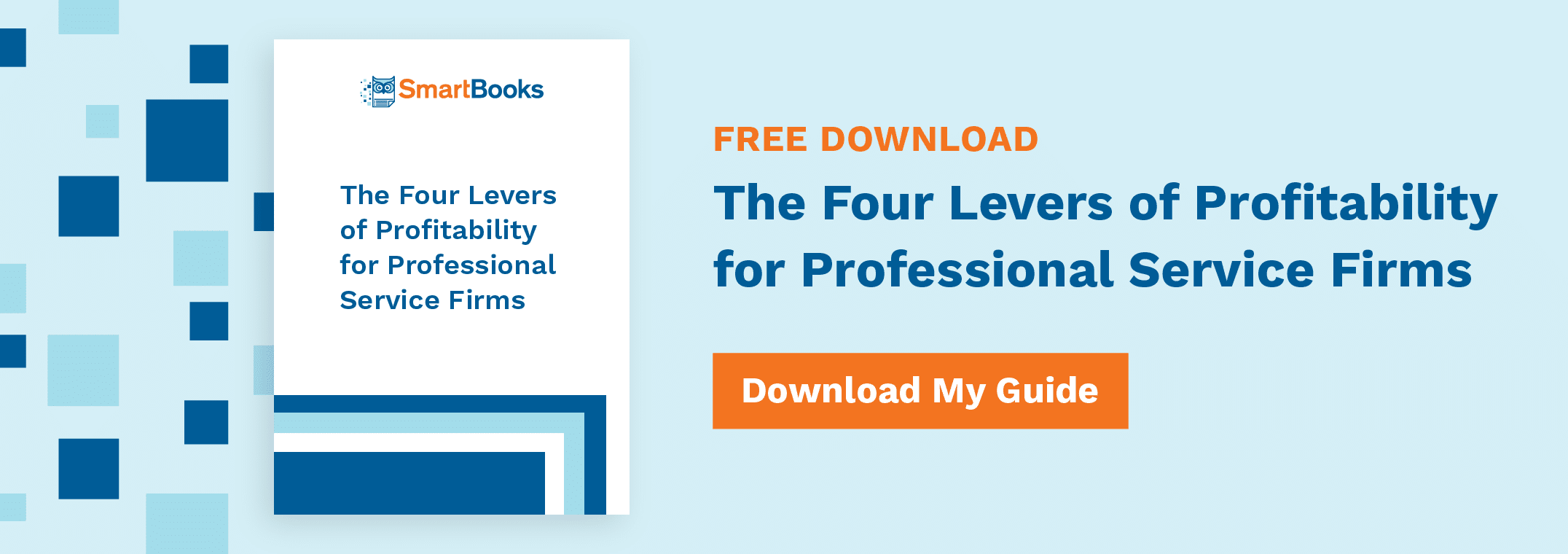The Impact of Customer Acquisition Cost on Profitability

One constant in running a professional services organization is the constant need to acquire new business. Whether a professional services firm’s revenue is project-based, recurring monthly, or something in-between, the cost of acquiring each new customer has a huge impact on profitability.
Calculating Customer Acquisition Cost
While business growth is one indicator of success, business owners must pay close attention to customer acquisition cost to ensure they have a sustainable business model. Customer acquisition cost (CAC) is the calculation of how much a firm spends to bring a new customer into the fold. To calculate customer acquisition cost, a firm adds up all the money it has spent on marketing and selling to prospects in a time period, then divides this sum by the number of new customers generated from the effort.
Going back to our example, let’s assume our firm spent $1,000 to find new clients in August. It gained 10 new customers in one month, making its CAC as follows: $1,000 / 10 = $100 per customer. If only it cost this little!
Of course, this is just the most basic calculation for CAC. To really dig deep into how CAC influences profitability, firms need to tie in other key metrics, such as lifetime value of its clients.
But in general, firms will find that increasing their client retention rates (by improving products or customer service) will reduce their need to spend exorbitant amounts on outbound marketing and will enable them to get a better ROI on their marketing and sales.
The Value of Retention
It’s well-known that retaining existing clients is more profitable than finding new ones. In fact, it costs five times more to find a new customer compared to satisfying and retaining an existing customer. This makes client retention a prime choice for optimization—even a two percent increase in customer retention can produce the same ROI as cutting costs by 10 percent.
These improvements largely come down to marketing spend. Firms that get most of their new business as referrals from existing clients will need to spend very little on outbound prospecting, marketing, and sales.
Calculating Client Retention
Customer retention is obviously important for staying profitable—but how do firms know where they stand?
Companies should begin by calculating their client retention rate. This simple calculation involves choosing a specified time period (per month, per year, etc.) and counting out how many customers stay on board during this period. Here’s an example. Let’s say a firm is calculating its client retention rate for August. It has 100 clients at the beginning of August and 3 of its existing clients left. The calculation would look like this: [(100 – 3) / 100] = 97% monthly retention. Multiply the rate of loss by 12 months, and the calculation looks like this: [(100 – (3 * 12)) / 100] = 64% annual retention. Client loss can be lumpy from month to month, and it is best to average the last few months together to get a more accurate figure. There are nuances in calculating client retention and lifespan figures but these calculations are close enough for most firms to use.
Retention rates vary dramatically by firm, business model, and industry. Keeping in mind that firms will lose clients over time, it’s clear that companies can’t rely entirely on customer retention to sustain long-term profitability.
Combining Retention and Ongoing Marketing
In truth, every company needs a combination of customer retention and acquisition strategies. It’s more profitable to keep existing customers, but in terms of profitability, firms can’t rely on repeat business to sustain ongoing growth. New customers and new revenue will inevitably need to be brought in to increase the rate of business growth beyond what the lower-cost referrals provide.
Looking at it another way, the longer a firm works with its clients, the less it needs to invest in marketing. And while some marketing will always be necessary, firms need to find that profitability sweet spot where they’re retaining as many customers as possible while still devoting adequate resources to customer acquisition.
Interested in learning more about how to optimize profitability for your organization? Download our free guide below.
